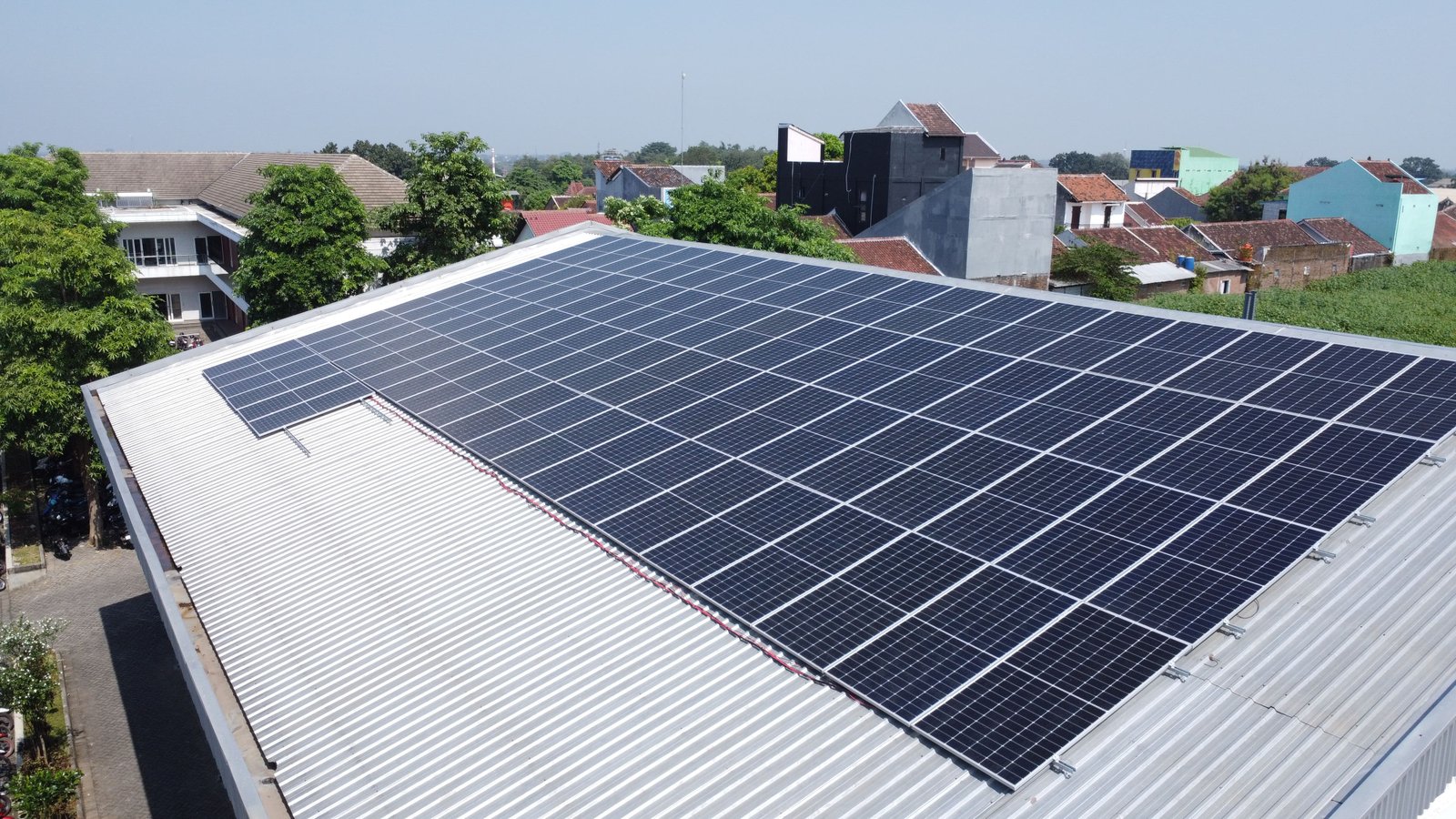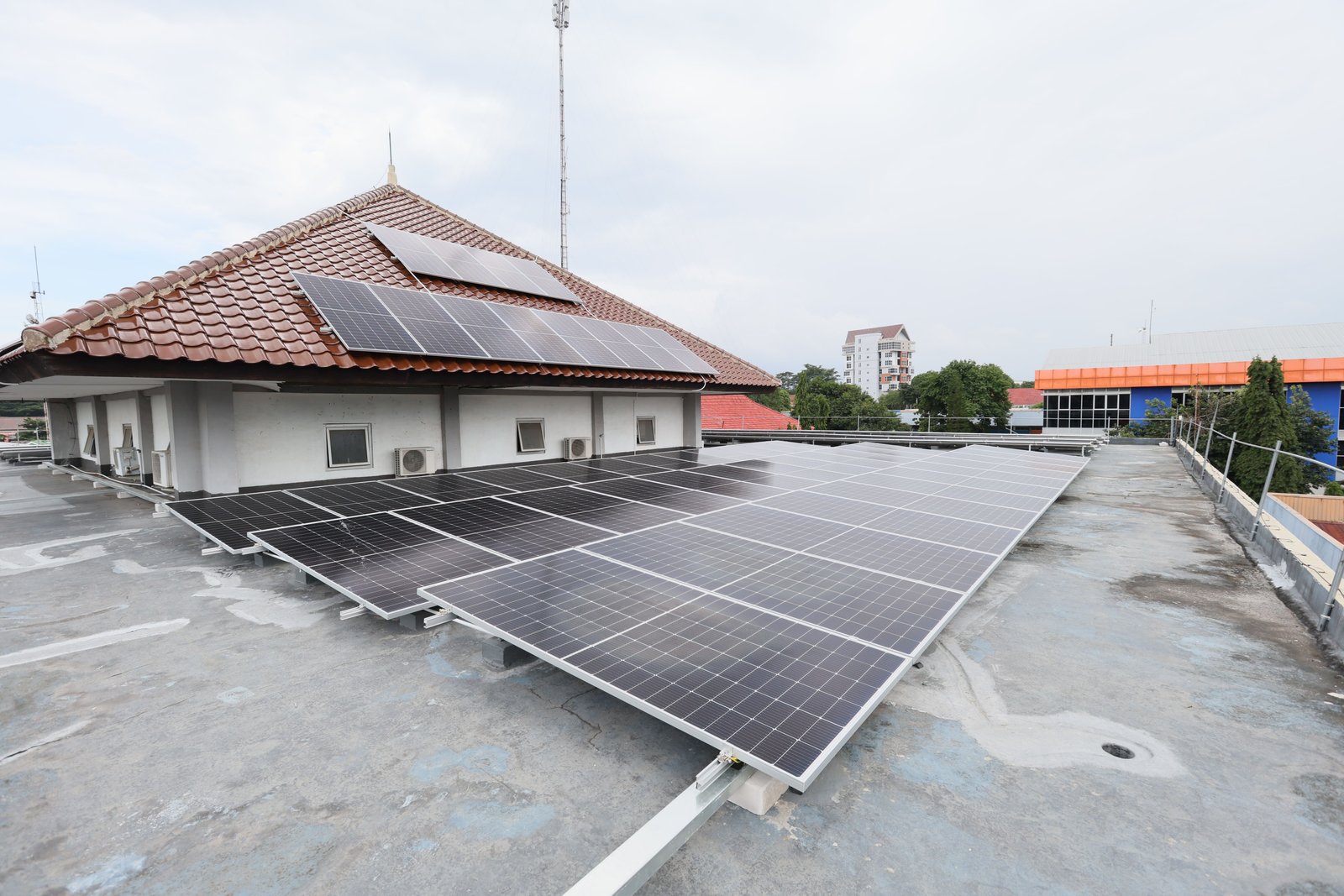
Solar energy is a fundamental pillar in the global energy transition. For many years, silicon-based solar cell technology has been the gold standard, driving the growth of solar power systems worldwide.
Solar energy is a fundamental pillar in the global energy transition. For many years, silicon-based solar cell technology has been the gold standard, driving the growth of Solar Power Systems (PLTS) worldwide. However, as silicon's theoretical efficiency limits are approached and the demand for lower costs and wider applications grows, the world of research and development (R&D) continues to produce innovations in new solar cell materials and architectures.
This article will take a deep dive into three of the most promising next-generation solar cell technologies: Perovskite, Tandem, and Organic cells. We'll look at how they work, their advantages, challenges, and their potential impact on revolutionizing the efficiency and cost of solar power systems in the future.
Perovskite solar cells have shaken the world of photovoltaics in the last decade due to their incredibly rapid efficiency gains in the lab.
What is Perovskite? This material has a specific crystal structure (similar to the natural mineral perovskite) that is highly effective at absorbing sunlight and converting it into electricity.
Advantages:
High Efficiency Potential: It has quickly matched, and has the potential to surpass, the efficiency of silicon cells.
Low-Temperature Process: It can be manufactured at much lower temperatures than silicon, saving energy and allowing for the use of flexible substrates (like plastic or thin metal).
Inexpensive Raw Materials: Its constituent materials are relatively abundant and cheap.
Challenges:
Long-Term Stability: It is susceptible to degradation from moisture, oxygen, and heat. This is a major focus of current R&D.
Lead Content: The most efficient perovskite formulations currently contain lead, raising environmental concerns and driving the search for lead-free alternatives.
Despite the challenges, the potential of perovskites to create inexpensive, lightweight, and flexible solar panels is enormous.
The concept behind tandem (or multi-junction) solar cells is to "stack" two or more layers of different solar cell materials.
How Do They Work? Each layer is designed to optimally absorb a different part of the solar light spectrum. For example, the top layer absorbs blue/green light (high-energy), while the bottom layer absorbs red/infrared light (lower-energy) that passes through it.
Popular Example: The Perovskite-on-Silicon combination is one of the most widely researched, as it leverages the strengths of both technologies.
Advantages:
Surpassing Efficiency Limits: By capturing a wider light spectrum, tandem cells can theoretically surpass the efficiency limits of a single solar cell (the Shockley-Queisser limit). Lab efficiency records continue to climb.
Challenges:
Manufacturing Complexity: Creating a precise, layered structure is more complicated and can be more expensive initially.
Current Matching: The electrical current produced by each layer must be matched for optimal performance.
Tandem cells offer a way to maximize power output from a limited surface area, which is crucial for applications where space is at a premium.
Unlike inorganic materials, organic photovoltaics (OPV) use carbon-based compounds (polymers or small molecules) as their active layer.
Key Characteristics:
Flexible and Lightweight: They can be made very thin and bent, even printed onto substrates like plastic.
Semi-Transparent: Their color and transparency can be adjusted, opening up opportunities for integration into windows or building facades.
Roll-to-Roll Production Potential: Similar to printing a newspaper, this allows for very low-cost, mass production.
Advantages: Their unique physical properties allow for applications that rigid solar cells can't reach, such as on wearable devices, tents, bags, or curved architectural surfaces.
Challenges:
Lower Efficiency: Historically, OPV efficiency has lagged behind other technologies, though it has seen significant improvements in recent years.
Shorter Lifespan: They tend to have a shorter lifespan due to the degradation of organic materials from UV exposure and air, though stability is constantly improving.
OPV may not directly replace silicon for large-scale solar farms anytime soon, but it holds great promise for niche applications and new markets.
These innovations collectively have the potential to bring major changes to the economics of solar power systems:
Increased Efficiency: Higher efficiency (especially from tandem and perovskite) means:
Solar power systems generate more electricity from the same area.
Less land is needed for the same power capacity, reducing land and site preparation costs.
The cost of the Balance of System (BoS) components—like mounting structures, cables, and inverters—is reduced per watt installed.
Reduced Production Costs: The potential for lower manufacturing costs (especially from perovskite and OPV due to low-temperature processes and cheap raw materials) could significantly lower solar panel prices.
Lower LCOE: The combination of higher efficiency and lower costs will reduce the Levelized Cost of Energy (LCOE)—the total cost per unit of electricity generated over the system's lifespan. This makes solar energy even more competitive.
The path from the lab to the mass market is always full of challenges. For these new technologies, the main hurdles include:
Scaling Up Production: Mass-producing them with consistent quality and cost.
Long-Term Reliability and Durability: Proving that panels can last 20-30 years in real-world field conditions (critical for bankability of large projects).
Specific Material Issues: Overcoming stability and lead issues with perovskites, and improving the efficiency and lifespan of OPV.
However, with massive global R&D investment and rapid progress, there is high optimism that these technologies will play a significant role in the future solar energy mix.
Innovation in solar cell technology doesn't stop at silicon. Perovskite, tandem, and organic cells represent a new wave that promises leaps in efficiency, cost reduction, and application flexibility. While there are still technical and commercial challenges to overcome, their potential to make solar power systems more efficient and affordable is very real, bringing us closer to an energy future dominated by clean, renewable sources.


